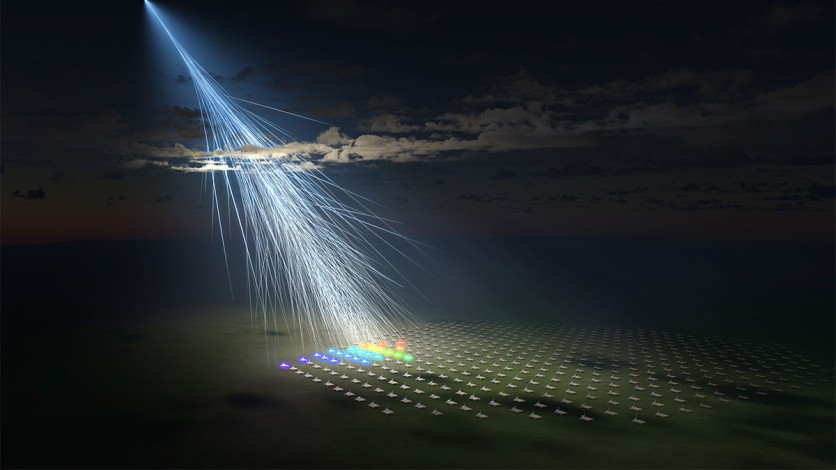The Telescope Array has detected the second-highest-energy cosmic ray ever observed, marking a significant milestone in astrophysics.
This groundbreaking discovery follows the famed Oh-My-God particle detected by the University of Utah Fly's Eye experiment in 1991, which defied conventional understanding due to its extraordinary energy levels.

The Telescope Array
On May 27, 2021, the Telescope Array experiment, led by the University of Utah and the University of Tokyo, recorded the second-highest extreme-energy cosmic ray, boasting an energy level of 2.4 x 10^20 electron volts (eV).
To put this into perspective, the energy of this single subatomic particle is equivalent to dropping a brick on your toe from waist height. The experiment, situated outside Delta, Utah, comprises 507 surface detector stations covering an expansive 700 km².
The incident activated 23 detectors in the northwest sector of the Telescope Array, covering a span of 48 km². Interestingly, the path of this cosmic ray seemed to initiate from the Local Void, a vacant expanse in space adjacent to the Milky Way galaxy.
Telescope Array co-spokesperson John Matthews explained the puzzle surrounding these high-energy particles by saying: "The particles are so high energy, they shouldn't be affected by galactic and extra-galactic magnetic fields. You should be able to point to where they come from in the sky."
"But in the case of the Oh-My-God particle and this new particle, you trace its trajectory to its source and there's nothing high energy enough to have produced it. That's the mystery of this-what the heck is going on?," he added.
Researchers named this ultra-high-energy cosmic ray the Amaterasu particle, drawing inspiration from the sun goddess of Japanese mythology. The observations raise questions about particle physics that are yet known to science.
Cosmic rays, remnants of violent celestial events, travel through space at nearly the speed of light, hitting Earth's upper atmosphere and generating secondary particles that rain down onto the surface. The Telescope Array's unique setup, with detectors covering a vast area, allows researchers to study the trajectory and energy of these cosmic rays.
Surpassing the Limit
Astrophysicists computed a theoretical boundary called the Greisen-Zatsepin-Kuzmin (GZK) cutoff, representing the highest energy a proton can retain when traveling significant distances before interactions with microwave background radiation deplete its energy.
Both the Oh-My-God and Amaterasu particles significantly surpass this limit. The researchers noted that composition of the particle is likely a proton, which ultimately introduces an additional element of mystery.
According to particle physics, a cosmic ray surpassing the GZK cutoff should possess too much power for the microwave background to alter its trajectory. Back-tracing its path leads to empty space, further complicating the puzzle.
Telescope Array co-author John Belz suggests unconventional possibilities and said: "It could be defects in the structure of spacetime, colliding cosmic strings. I mean, I'm just spit-balling crazy ideas that people are coming up with because there's not a conventional explanation."
The Telescope Array, situated in Utah's West Desert, aims to capture more cosmic events and shed light on the perplexing nature of these ultra-high-energy cosmic rays.
The Telescope Array has reportedly since observed over 30 ultra-high-energy cosmic rays, but none approaching the Oh-My-God-level energy. No observations yet reveal their origin or how they can travel to the Earth.
As astrophysicists grapple with this cosmic mystery, the expanded Telescope Array aims to unravel the secrets hidden within these extraordinary particles. The team's findings were published in the journal Science.

ⓒ 2025 TECHTIMES.com All rights reserved. Do not reproduce without permission.




